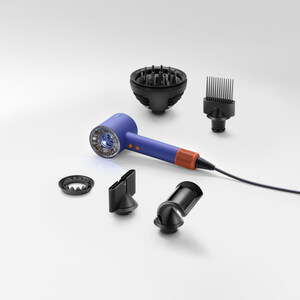Is Your House Making You Sick?
Certified Indoor Environmental expert offers unconventional and practical tips to help reduce indoor pollution and create a healthier home
CHICAGO, May 19 /PRNewswire/ -- On average, Americans spend about 90 percent of their time indoors – of that 90 percent, about 65 percent of that is spent at home.(1) Indoor air pollution, including household allergens, is one of the leading causes of health problems in the United States.
A number of everyday products and activities can be making your home sick. With a few simple changes and better practices, Americans can immediately manage the quality of air in their homes.
According to Dan Stih, Certified Indoor Environmental Expert, retired Engineer and author of Healthy Living Spaces: Top 10 Hazards Affecting your Health, indoor pollution can be just as harmful as outdoor pollution. "The last thing any person wants is to live in a sick house, full of triggers that end up affecting their overall well-being," says Stih. "Paying attention to how your appliances work, the ingredients in cleaning supplies and your overall atmosphere will help combat pollutants and reduce allergies to improve your home environment."
Asthma and allergies strike one in every four Americans, approximately 60 million people.(2) With experts predicting this year will be the worst allergy season in a decade, Stih recommends evaluating what's happening in your home and investigating simple ways to manage allergy levels.
Indoor allergens come from a number of sources such as pet dander, dust mite feces and mold spores. As an indoor air expert, Stih explains "the technology and design behind appliances play a key role in maintaining a healthier home."
Dan Stih suggests five practical tips to help reduce triggers that cause unhealthy homes.
1) |
Vacuums. Pay attention to what they promise: Investing in a good vacuum cleaner can make all the difference. Many vacuums not only underperform but can do more harm than good. Look for a machine that captures dust and does not blow it back into the air. I've tested a number of machines and found that Dyson vacuums reduce allergen particles. They are certified asthma & allergy friendly™ by the Asthma and Allergy Foundation of America (AAFA). (3) |
|
Don't be fooled by marketing lines. You need a vacuum that has a HEPA filter, but make sure it is a post motor filter. |
||
2) |
Air purifiers. The power of filters. Air purifiers that do not require filters produce ozone, a gas that can cause health problems and affect our lungs and respiratory system. Often you can smell the ozone. Purifiers with high efficiency particulate air (HEPA) filters, on the other hand, are the best option given they remove at least 99.97 percent of airborne particles. If you air purifier doesn't have a filter unplug it and go buy one that does. |
|
3) |
Mold. Don't just kill mold, remove it. Since mold causes allergies, part of getting rid of household allergens is to get rid of mold and fix the water problems that are causing mold to grow. Applying bleach or other biocides to mold may actually induce the mold to produce toxins as part of its last fight to survive. Instead, soap, water and hydrogen peroxide can be used in cleaning the affected area. The Environmental Protection Agency states that dead mold may still cause allergic reactions in some people so for a healthy home, it is not enough to kill mold, it must also be removed. |
|
4) |
Scents. Be as scent-free as you can be. Unplug air-fresheners, wash cloths in non-fragrant laundry soap and minimize the use of perfume. According to the United States Food and Drug Administration more that 70 percent of allergy sufferers develop respiratory symptoms when exposed to perfume. |
|
5) |
Household Cleaners. Read the label. Cleaning supplies can sometimes increase allergen levels. Reading the label to identify hazardous chemicals is important when looking for cleaning supplies. If ingredients are not on the label, do not purchase it. Avoid cleaning products that say flammable, active ingredients, and contain alcohol as these airborne particles can ultimately affect our health. A healthy cleaning product will always list all its ingredients. |
|
About Asthma Allergy Foundation of America:
The Asthma and Allergy Foundation of America (AAFA), a not-for profit organization founded in 1953, is the leading patient organization for people with asthma and allergies, and the oldest asthma and allergy patient group in the world. AAFA provides practical information, community based services and support to people through a network of Regional Chapters, Support Groups and other Local Partners around the U.S. AAFA develops health education, organizes state and national advocacy efforts and funds research to find better treatments and cures. In addition, the mission of AAFA's Web site is to provide online access to AAFA's reliable, validated asthma and allergy information and tools to families, patients, parents, healthcare providers, policymakers and others.
About asthma & allergy friendly™ certification
In 2006, the asthma & allergy friendly™ Certification Program was created by top medical experts and the oldest and largest not-for-profit, asthma and allergy patient advocacy organization in the world with the mission to empower consumers to make an informed purchase decision when choosing allergen-avoidance products. The Certification Program independently tests and identifies consumer products that are more suitable for the 60+ million people in the United States living with asthma and related allergies.
About Dyson technology
Home to over 300 engineers and scientists, Dyson is all about engineering new and better technology. Rigorous testing on all Dyson machines takes place 24 hours a day, 7 days a week and pushes machines to their breaking point – vacuums are dropped onto a hard floor over 5,000 times, prototypes run at temperatures ranging from 23 degrees F to 113 degrees F in Dyson's specially-designed environmental chamber. And Dyson vigorously protects its technology – as of March 2010, Dyson had over 1,300 patents and patent applications for over 300 different inventions.
Other vacuums are still designed to need replacement belts and filters. These can be hard to find and can really add up. Over five years the average maintenance cost could be $233. With Dyson there are no bags, filters or belts to buy. Dyson uprights and canisters are also guaranteed for five years, so they don't cost a dime to maintain.
(1) U.S. EPA/Office of Air and Radiation; Office of Radiation and Indoor Air; Cosponsored with the Consumer Product Safety Commission
(2) Annual 2010 U.S. Prevalence Statistics for Chronic Disease, AAFA
(3) The asthma & allergy friendly™ Certification Program, administered by the Asthma and Allergy Foundation of America (AAFA) in partnership with the international research organization Allergy Standards Limited (ASL), is an independent program created to scientifically test and identify consumer products that are more suitable for people with asthma and allergies
SOURCE Dyson
WANT YOUR COMPANY'S NEWS FEATURED ON PRNEWSWIRE.COM?
Newsrooms &
Influencers
Digital Media
Outlets
Journalists
Opted In





Share this article